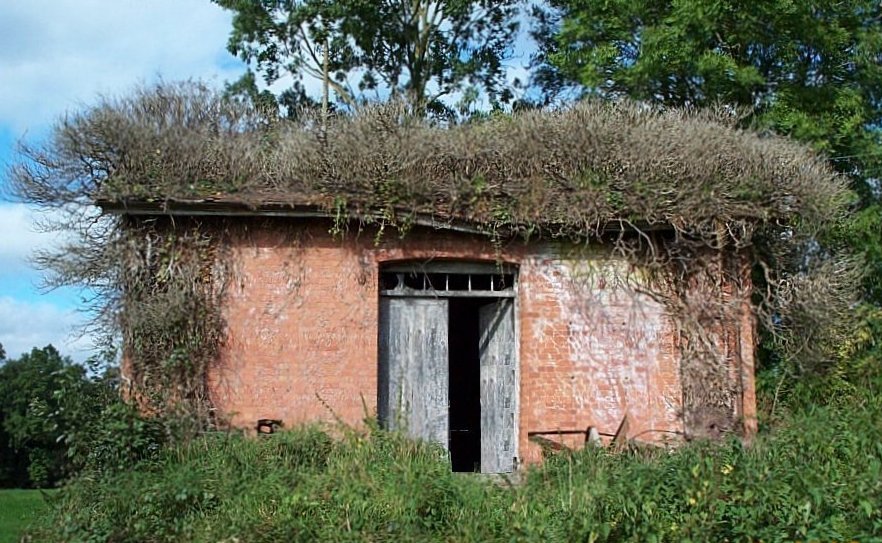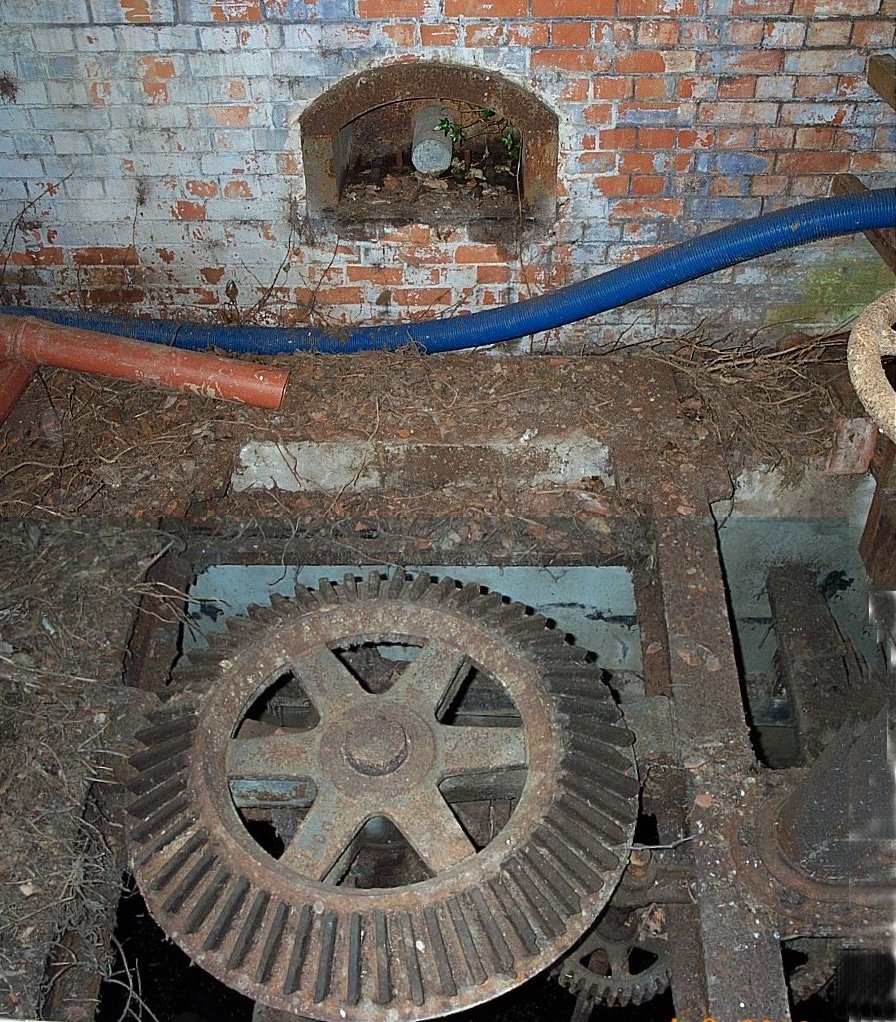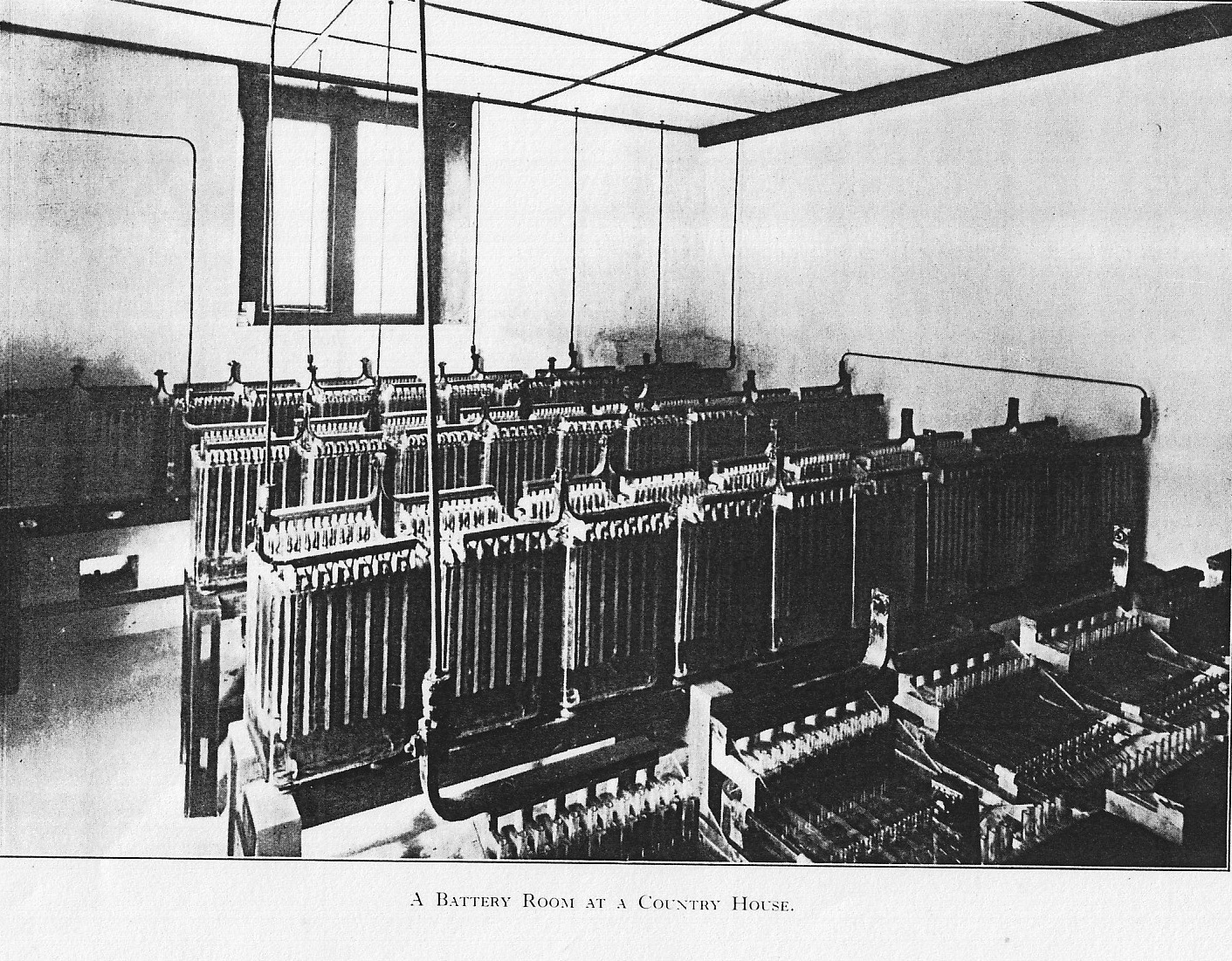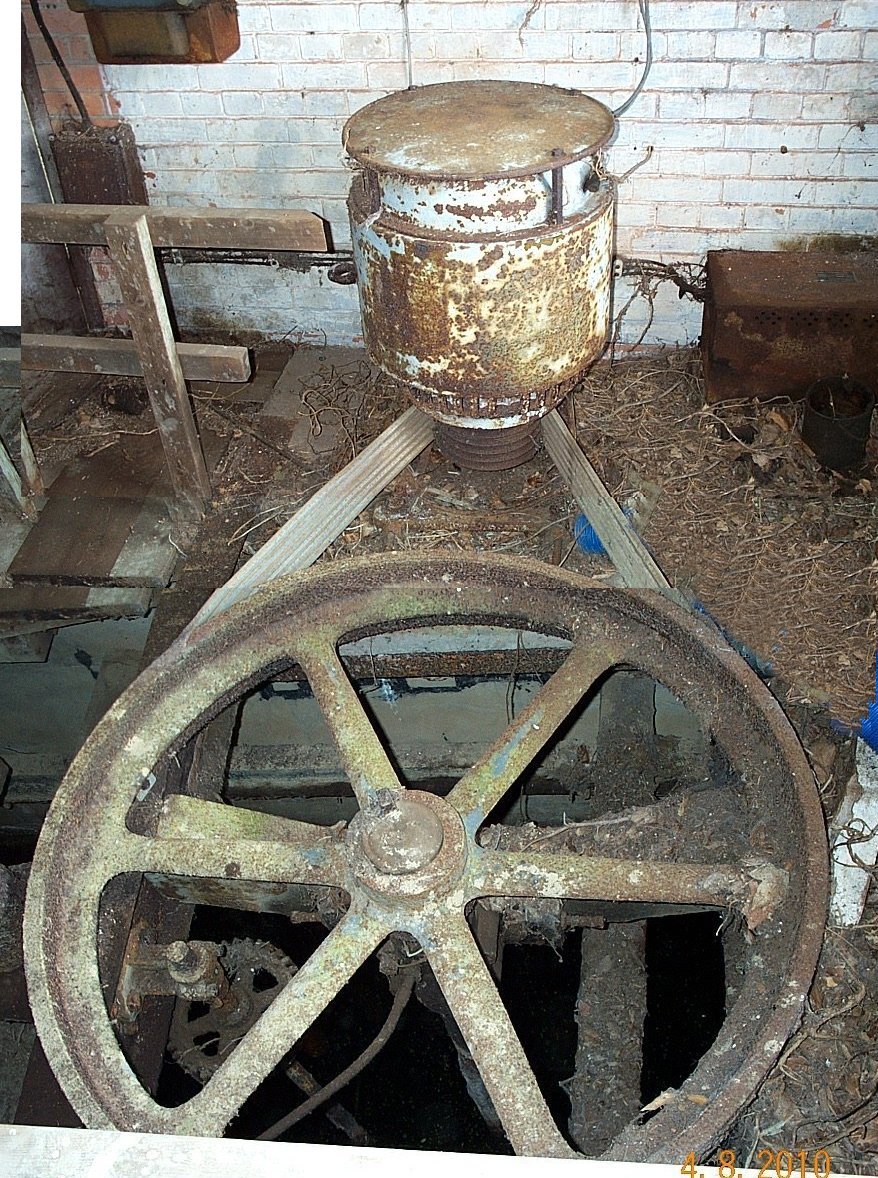
| Knightshayes Court Devon Hydro-electric Power Generation |
|
Introduction
Hidden
away
and forgotten about for well over half a century is
an example of early 20th century electrical history,
that of hydro-electric power generation. Inside this
small building can be found the equipment of a
hydro-electric generating plant.
|

|
Turbine
Building
The
building measures approx 10 metres x 5 metres with a
floor to ridge height of 10 metres. The basement of
the building was constructed as a reservoir to store
the water needed to power the turbine. Sluice valves
were installed to isolate the water supply and allow
for maintenance of the equipment. A new water-course
was constructed to divert water from the River Exe
to the turbine building.
 One end of the building houses the water turbine which is submerged within the reservoir, and through a vertical drive shaft, pulley and belts drove a dynamo which originally generated electrical power at approx. 110 volts DC. At
the same end of the building adjacent to the
vertical drive shaft is a second vertical drive
shaft fitted with a bevelled gear.
 |

|
Distribution
Cabling
From
the DC dynamo the electrical cables were then routed
through a buried cast iron pipe across the adjacent
fields to Knightshayes Court, approx ¾ of a mile
away.
As DC cables generate heat, a means of dissipating this heat was needed. So an interesting feature of this buried pipe is that it was filled with oil presumably to act as a heat conductor removing much of the heat generated by the cables. The oil filling equipment for the cast iron pipe is still installed within the turbine building and carries the inscription, Johnson
& Phillips
Brookes Patent Liquid System for Underground Mains Sole Makers Engineers London To
store the DC electric current for the periods when
lighting was not required batteries / accumulators
were provided. A room at the rear of the courtyard
was used to house the batteries / accumulators.
 house are to be found in the attic area above the servants quarters. |

|
Updating
the Equipment
At
a later date most probably during the 1940’s the DC
dynamo was removed and replaced by an
alternator/generator manufactured by Brook Motors
Ltd of Huddersfield providing power most likely at
415 volts 3 phase 50 hz AC. This
alternator/generator complete with its drive belts
and switchgear is still extant within the building.
 The
original DC cable network was then abandoned and new
AC cabling installed which was routed from the
turbine building as overhead cables fixed to poles.
Any electrical current surplus to requirements could
be fed into the National Grid. Meters were installed
to measure the amount of electrical current used.
|

|
Dating
the Equipment
Establishing
the dates when the turbine building was constructed
and the original DC generating equipment installed
has proved to be difficult, as no written records
appear to still exist. An Ordnance Survey map of
1888 does not show the turbine building. It is known
that during the 1930’s DC electric lighting was
still used in the house and that during the 1940’s
conversion to AC had taken place.
Further investigation will be needed to search for any written records. |

|
Future
Preservation
BUILDING.
- Partial restoration of the building, has already
been carried out by the Landowner, by the removal of
the vegetation that had completely obscured the
structure. Also on one side of the building the
pitched roof sheeting has been replaced to prevent
any further rain water penetration.
EQUIPMENT. - The opportunity now exists for this building and its electrical equipment to be conserved and preserved. Whilst it is obviously not possible for the equipment to be reused it could be cleaned and preserved for display purposes, to show historians how a small hydro-electric power plant was used to provide lighting for the country house, especially those who were lucky enough to have a large river within close proximity of the property. RESERVOIR. - The possibility of emptying the building's water reservoir should also be considered, by pumping the contents into the downstream water course. This action would allow the water turbine and its drive mechanism to be viewed, recorded and studied. |
These photos of the turbine building was taken when it was almost completely covered by vegetation and before any
internal or external restoration work was carried out.
In a perverse way it is due to its parlous condition coupled with its remoteness of location, that has kept it free from vandalism.

